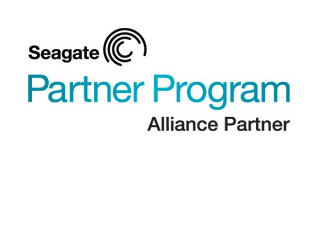 More and more people and businesses are storing and accessing their data in the cloud, which means big opportunity for Seagate. The company discussed its cloud strategy, technology solutions and partnerships at a gathering of industry analysts last week in San Francisco.
More and more people and businesses are storing and accessing their data in the cloud, which means big opportunity for Seagate. The company discussed its cloud strategy, technology solutions and partnerships at a gathering of industry analysts last week in San Francisco.
In 2011, an estimated 25 percent of storage was shipped into cloud applications, according to Seagate market research. By 2020, it’s anticipated that over 60 percent of storage will go into the cloud.
In terms of new business opportunities, Seagate marketing representative Scott Horn likened the cloud to the build-out of the electrical grid in the early 20th century and the interstate-highway system in the U.S.
Early Stages
“We’re still in the early days of the cloud,” Horn said, adding that there’s an entire ecosystem of new and established companies looking to add value to the cloud—including software and hardware providers.
Seagate has a broad portfolio of products for the cloud, including enterprise hard drives, solid-state drives, hybrid drives and network-attached storage (NAS) products for businesses and the home.
The company also supports open-source software and open standards through its membership in the Open Stack Foundation and Open Compute Project—a community of more than 150 companies dedicated to building open cloud architectures.
“We’re collaborating with cloud-service providers and software vendors to help us better understand how we can optimize our drives for cloud infrastructures,” added Wes Perdue, director, Enterprise Product Line Management.
Listening to Customers
As an example of that collaboration, Perdue said the company has designed its new enterprise products with humidity sensors that automatically adjust the fly heights of the heads so that the drives run more efficiently in higher temperatures. Other drives are equipped with Seagate’s Instant Secure Erase technology, which reduces drive-erasure times from hours to seconds.
“This innovation came about from talking with data center managers,” Perdue said. “It takes 13 hours to perform a single overwrite on a drive, for example, and data centers typically perform at least three overwrites on a drive—or a total of 39 hours to erase data on a drive. That’s a process that just doesn’t scale for modern cloud data centers.”
Last week’s Cloud Summit also spotlighted Seagate’s Cloud Builder Alliance, which was launched last September and now has more than 40 members. The alliance is aimed at select system builders that make servers and storage systems for cloud data centers.
 Jeff Luckett, director of engineering at MBX Systems, which makes server appliances and embedded systems, said membership in the alliance has brought several benefits to his company.
Jeff Luckett, director of engineering at MBX Systems, which makes server appliances and embedded systems, said membership in the alliance has brought several benefits to his company.
“The Seagate Cloud Builder Alliance gives us access to training materials, engineering resources and early evaluation drive samples that we can take back to our customers to provide them with better solutions,” he said.
Cloud Storage for Consumers
The cloud also is quickly gaining traction in the home. In 2010, Seagate estimated that 3 percent of U.S. consumers used a NAS device in their home; that figure is rising quickly, however, and is expected to be as high as 15 percent within the next year.
“We see extremely different uses of the cloud, even in the same home,” said Jeff Fochtman, senior director of product marketing at Seagate. “As a company, we have to develop solutions that address a lot of differentiation and complexity. Everyone’s storage needs are unique. But we all want the same things as consumers—access to our data on any device, everywhere we go, and it has to be easy.”
With its Internet-attached products, such as Seagate Central, the company gives consumers an easy way to share and access their content from the cloud.
Even Seagate’s direct-attached external storage devices now have a cloud connection, Fochtman added. “We have software that lets consumers backup their photos and videos to the cloud,” he explained, “and we also allow backup from Facebook and Flickr. We’re tailoring our products to the way people use the cloud in their daily lives.”








Leave A Comment